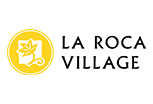We will switch valleys as we continue through the heart of the Pyrenees, moving into the Val d’Aran. A third of the land is above 2,000 metres elevation and its Atlantic-facing orientation influences the make-up of the forests and Pyrenean fauna. Its villages, with stone houses surrounding a church, are the starting point for excursions through ravines, rivers and green meadows. The steep terrain of the Val d’Aran always kept its inhabitants slightly separated from the world, which accentuated unique social and cultural characteristics that persist today. These include a hearty cuisine, their native language—Aranese—and the Romanesque architecture that is so distinctive here. It isn’t easy to choose between the more than thirty churches in the area, highlighting the intimacy of Era Mair de Diu dera Purificacion, in Bossòst, and the sweet Santa Eulària d’Unha, both erected in the twelfth century.

















